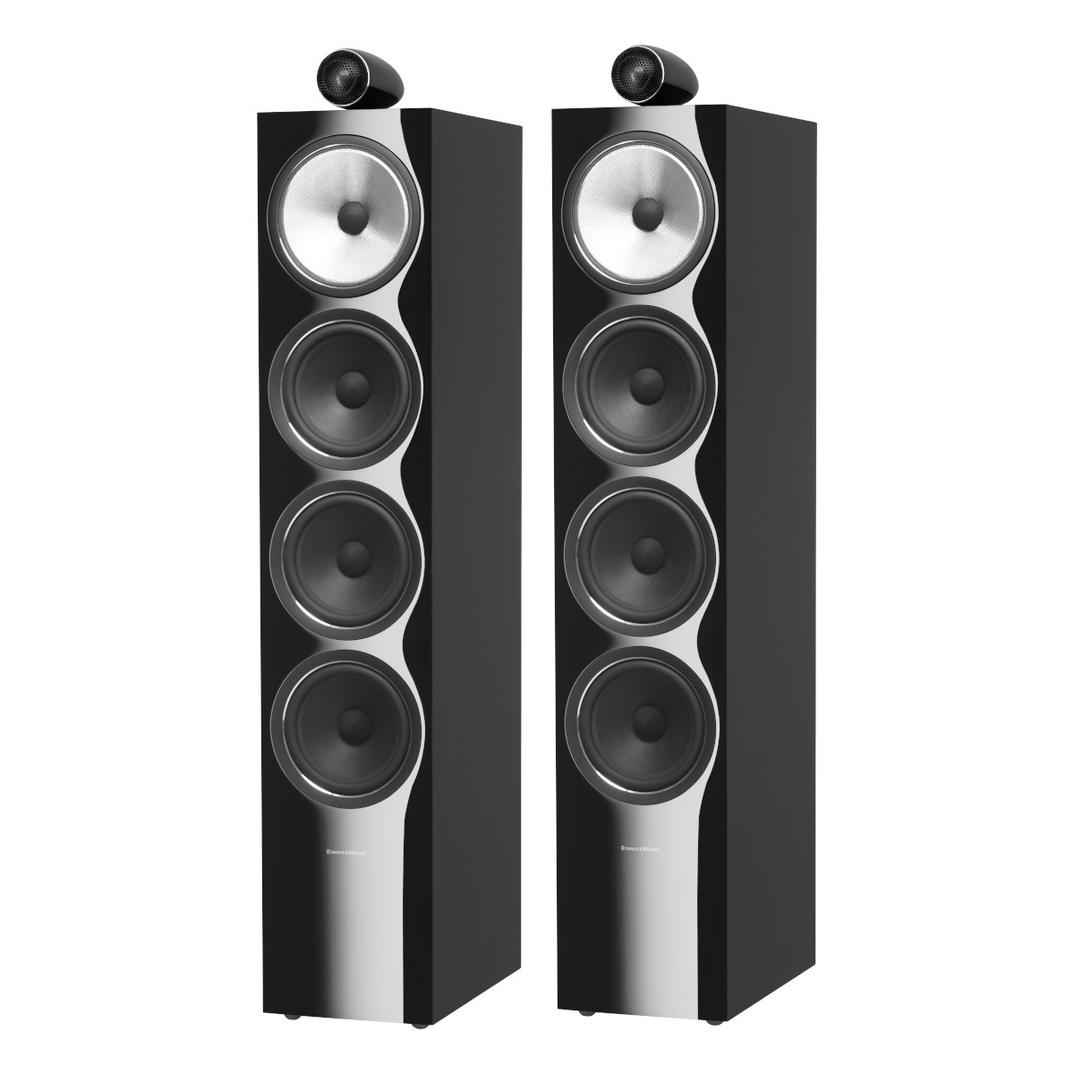
The floorstanding loudspeaker is your traditional audiophile speaker. Because of their large size and to-the-floor design, floorstanding speakers have the most bass, the largest soundstage, and often produce the best sound money can buy.
Types of Floorstanding Audiophile Loudspeakers
Dynamic Speakers
Dynamic loudspeakers use traditional speaker drivers normally connected via a crossover network that sends the high frequencies to the tweeters, the midrange audio to the midrange driver and the low-frequency material to the larger woofers. Dynamic speakers can commonly be found as two-way bookshelf speakers, three-way floor-standing speakers or in even more complex configurations. Dynamic speakers are the most popular design of speakers in the audiophile and home theater markets.
Electrostatic Speakers
Electrostatic Speaker designs use a high voltage electrical field to drive a thin membrane between two perforated conductive plates called stators. Unless paired with a hybrid design using dynamic woofers (like MartinLogan speakers do), electrostats don't need a crossover system the way traditional dynamic loudspeaker systems do.
Fans of electrostats love their linear and low-distortion sound. Electrostats are very hard to drive and therefore need very powerful amplifiers to get high levels of sound pressure. An AV receiver is not a good match with a true electrostatic loudspeaker system. Electrostats are not known for their ability to reproduce deep bass and are, in most cases, physically very large.
Planar Speakers
Planar speakers use a thin membrane to create a three-dimensional sound that is beloved by a small group of older audiophiles. The most famous type of planar speaker is the Magnepan. Design flaws and technological limitations make planar speakers difficult to use in home theater applications. Also, don't let their thin size make you think they can be placed near a wall and still sound good. Planars need a lot of space between the speakers and the back wall of a listening room to sound their best. Planar speakers require a lot of power to play loudly and generally still can't keep up with dynamic or even electrostatic designs.
Ribbon Speakers
The term "ribbon" in the context of a conversation about speakers generally refers to the concept of using a thin ribbon driver, along with other, normally dynamic drivers to create the three-dimensionality and characteristic sound found in planar or electrostatic speakers without sacrificing power and dynamics. The most famous ribbon loudspeaker company today is Wisdom Audio, which makes the most expensive in-wall, ribbon-loaded speakers on the market today.
Horn Loaded Speakers
Horn speakers are used in cinema applications and in many recording studios. Horns have a distinctive sound on the high frequencies and are the speakers of choice for installations behind perforated screens, as they are highly efficient compared to traditional speakers and therefore will play loudly enough to make the behind-screen application sound good. Klipsch is the most well-known company currently selling horn loaded consumer-grade speakers.
Bipolar Speakers
Bipolar speakers fire both from the front and the back. Planar and electrostatic designs are bipolar, which helps to create their distinctive three-dimensional sound. Bipolar speakers can be dynamic or any number of other designs. Bipolar speakers are more subject to the acoustics to the room than more traditional designs. Bipolar rear and side-channel speakers have been in use in THX-certified theaters for more than a decade.